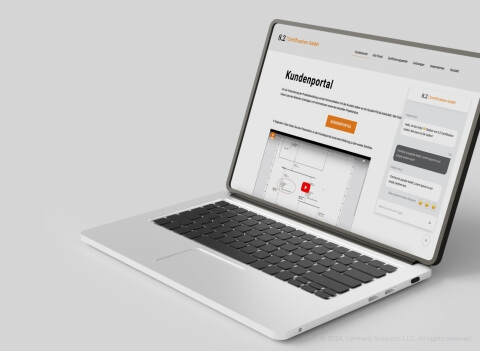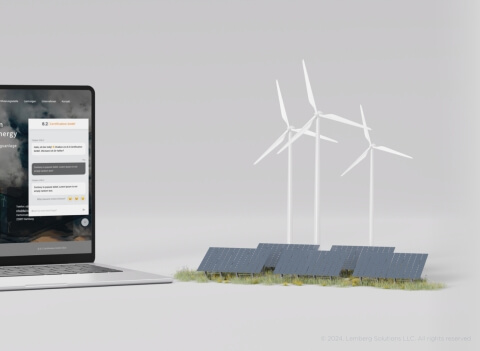
FAQ chatbot development and integration for 8.2 Certification
8.2 Certification is a German company that assists its customers in A, B, or C-type certifying products and services that generate renewable energy, including wind, photovoltaic, and biogas systems.
The challenge
8.2 Certification struggled to provide 24/7 support to their customers. To ensure constant assistance, they had a common FAQ block on their website, which wasn't an efficient solution for covering all customers' requests. For this reason, they sought AI-powered chatbot development and integration expertise.
Delivered value
Our team developed and integrated a chatbot based on the existing knowledge base, implementing semantic search and synthetic data generation. We also built an admin panel from scratch that lets our client's employees manage chatbot answers, receive feedback from customers, and provide additional consultations.
The process
As the company sought to provide its customers with constant assistance regarding its services, it had a FAQ block on its website, which is a common option for B2B businesses. However, this approach to customer support was not sufficient to cover all the incoming requests.
Thus, the idea of integrating their website with an AI-powered chatbot was born to let customers get immediate responses to their questions based on the existing knowledge base.
During the initial phase, the client team extended their questions and answers knowledge base and provided this dataset to our team. Since our data science experts kicked off the project with PoC development, we created a demo app, including the front end, to showcase how the chatbot would work. As a result, we validated the solution on real data and chose an optimal engineering approach.
After agreeing on the next iterations, we created a chatbot UI/UX design and proceeded with the data science part.
Since we received a knowledge base, our task was to develop and integrate the chatbot's functionality into the client's CMS-based website and fill the chatbot storage with existing data.
Before starting the development phase, we needed to complete the data science part, where we used the retrieval-augmented generation (RAG) approach.
We uploaded the knowledge base dataset into the OpenAI embedding model to convert this data into multidimensional vectors, making it usable for semantic search, the chatbot's core functionality that enables users to receive immediate responses.
We integrated synthetic data generation to create more datasets with potential questions and answers to train the model, ensuring high user satisfaction. Users can also provide feedback via the chatbot, which helps improve the knowledge base.
Our data science engineers also foresaw cases in which the database didn't have the right answers to customer questions. That’s why the chatbot has built-in thresholds that give users hints, like rephrasing the question or contacting the manager if no correct answer is available at the established confidence level.
As soon as the data science part was ready, we implemented the back-end logic into the Python-based website, ensuring its smooth communication with the front end using REST protocol.
As a final iteration of the project, our team developed and delivered an admin panel that allows employees to manage clients’ requests for additional consultations, receive their feedback, and record users’ search histories. The panel’s admins can also edit questions and answers, generate new responses, and store them in the knowledge base.
For future implementations, we plan to integrate the chatbot with hints to make it clear to users what types of questions they can expect responses to.
How it works


We are thrilled with our project outcome and had a great experience working with Lemberg Solutions experts throughout the project. They delivered everything on time and as expected, and we are glad to continue cooperating on the following projects.



